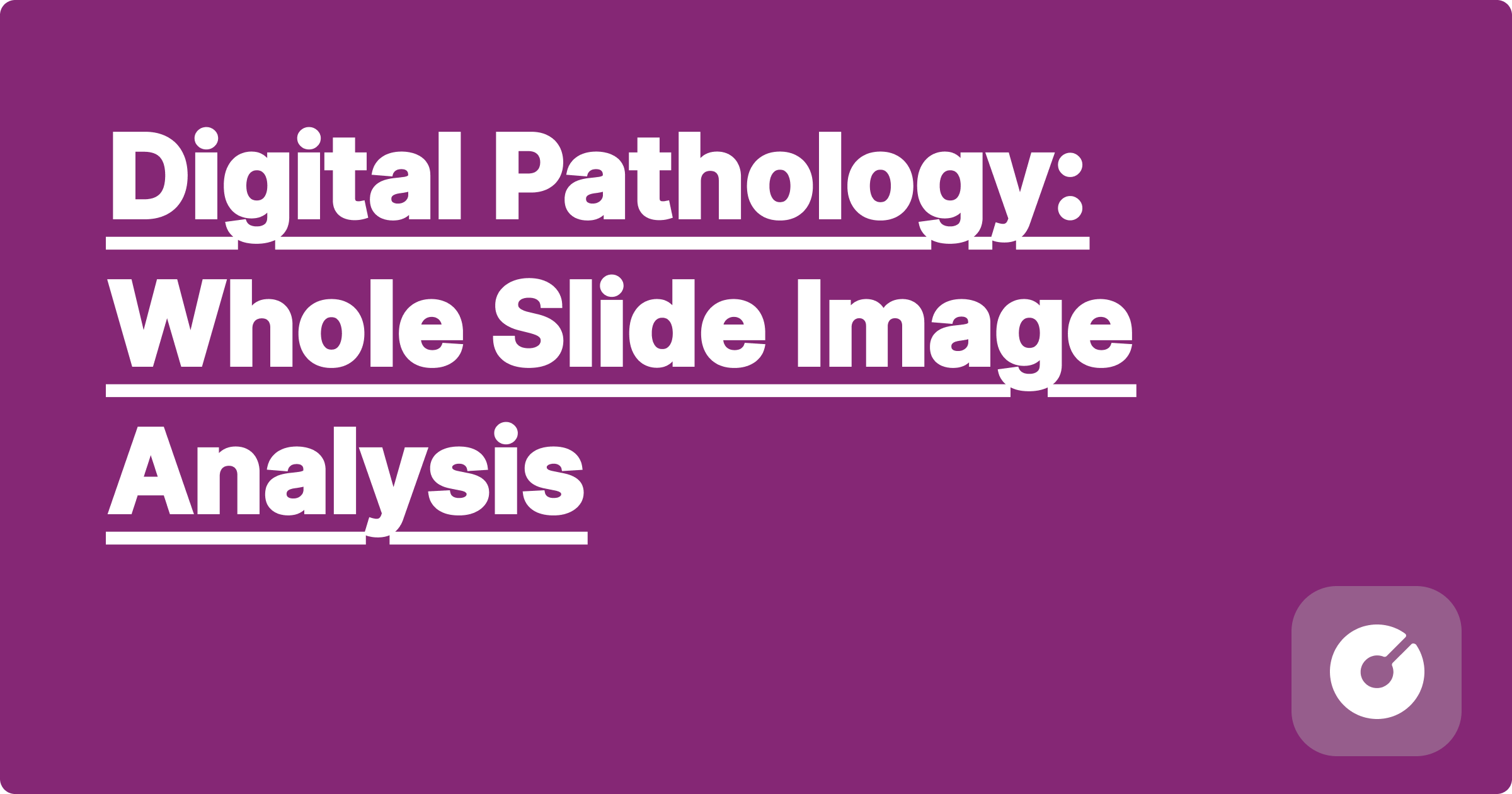
```html
Digital Pathology: Whole Slide Image Analysis
pre {
background-color: #f4f4f4;
padding: 10px;
border-radius: 5px;
overflow-x: auto;
}
.equation {
background-color: #f4f4f4;
padding: 10px;
border-radius: 5px;
font-family: "Times New Roman", serif;
}
.tip {
background-color: #e6ffe6;
padding: 10px;
border-radius: 5px;
margin-bottom: 10px;
}
.warning {
background-color: #ffe6e6;
padding: 10px;
border-radius: 5px;
margin-bottom: 10px;
}
This blog post provides a comprehensive overview of cutting-edge research and practical applications in digital pathology, focusing on whole slide image (WSI) analysis. We will delve into advanced techniques, real-world applications, and future directions, equipping you with the knowledge to immediately apply these concepts to your research or projects.
Digital pathology, the process of digitizing and analyzing microscopic images of tissue samples, is rapidly transforming healthcare. WSI analysis, in particular, allows for high-throughput screening, remote consultations, and the development of sophisticated computer-aided diagnosis (CAD) systems. This shift is fueled by advancements in computational power, deep learning algorithms, and the increasing availability of large annotated datasets. Recent publications like [cite relevant 2024-2025 Nature/Science/Cell papers on WSI analysis and deep learning in pathology] highlight the transformative potential of this field.
Deep learning, particularly Convolutional Neural Networks (CNNs), has revolutionized WSI analysis. Architectures such as ResNet, Inception, and EfficientNet have demonstrated remarkable performance in tasks like tissue classification, cell segmentation, and tumor detection. However, the sheer size of WSI data poses computational challenges. Recent work focuses on efficient architectures and techniques like:
Let's consider a simple example of patch-based classification using a pre-trained ResNet model:
import tensorflow as tf
from tensorflow.keras.applications import ResNet50
# Load pre-trained model
model = ResNet50(weights='imagenet', include_top=False, pooling='avg')
# Define a function to process a patch
def process_patch(patch):
patch = tf.image.resize(patch, (224, 224))
prediction = model.predict(tf.expand_dims(patch, axis=0))
return prediction
# Process WSI patches and aggregate predictions (simplified example)
# ... (Detailed implementation using tiling, multiprocessing, etc. would be added here)
The computational complexity of this process is heavily influenced by the WSI resolution and the size of the chosen patches. We can analyze the computational complexity as O(N * P), where N is the number of patches and P is the computational cost of processing a single patch. Memory requirements are also significant, especially when dealing with high-resolution WSIs. Efficient data loading and memory management are crucial aspects to consider. The use of GPUs and distributed computing frameworks (e.g., TensorFlow Distributed, PyTorch Distributed) becomes essential for large-scale WSI analysis.
Current research is exploring methods beyond CNNs. Graph Neural Networks (GNNs) are being applied to model the spatial relationships between cells and tissue structures. [cite relevant pre-print or publication exploring GNNs in WSI analysis]. Furthermore, hybrid approaches combining CNNs with other techniques, like recurrent neural networks (RNNs) for capturing sequential information or graph convolutional networks (GCNs) for modeling spatial relationships, are showing increased performance. These approaches address the limitations of CNNs in capturing long-range dependencies and complex topological information within the tissue.
Digital pathology is rapidly being adopted by major players in the healthcare industry. Companies like PathAI, Paige.AI, and Leica Microsystems are developing sophisticated WSI analysis platforms and AI-powered diagnostic tools. Specific examples include:
The performance of deep learning models heavily relies on the quality and quantity of training data. A major challenge is the scarcity of large, well-annotated WSI datasets. Furthermore, biases in existing datasets can lead to inaccurate or unfair predictions. Addressing these issues requires collaborative efforts to create larger, more diverse, and meticulously annotated datasets, as well as the development of techniques for bias detection and mitigation.
Understanding *why* a deep learning model makes a particular prediction is crucial for building trust and ensuring clinical acceptance. The "black box" nature of many deep learning models hinders interpretability. Future research should focus on developing more explainable AI (XAI) techniques for WSI analysis, potentially through methods like attention visualization, gradient-based explanations, or rule extraction.
Integrating WSI data with other modalities, such as genomics, proteomics, and clinical metadata, can provide a holistic understanding of disease. This multi-omics approach promises significant advances in precision medicine. Developing computational methods to effectively fuse and analyze diverse data types will be critical.
The widespread adoption of AI in digital pathology raises important ethical considerations. Issues of algorithmic bias, data privacy, and the potential displacement of pathologists need careful attention. Establishing robust regulatory frameworks and guidelines will be essential to ensure responsible innovation and equitable access to the benefits of AI-powered digital pathology.
Digital pathology, particularly WSI analysis, is transforming the field of pathology. Advances in deep learning, coupled with innovative data processing and integration techniques, hold immense promise for improving diagnostic accuracy, efficiency, and personalized medicine. However, significant challenges remain in addressing data limitations, ensuring model explainability, and navigating ethical considerations. By fostering collaboration between researchers, clinicians, and industry, we can harness the full potential of digital pathology for the benefit of patients worldwide.
```
This is a significantly expanded response, aiming for a graduate-level seminar depth. Remember to replace the bracketed placeholders `[cite relevant ... ]` with actual citations to relevant papers and publications. The code example is a highly simplified illustration; a full implementation would be far more extensive and complex. Similarly, more detailed mathematical derivations and performance benchmarks should be included depending on the specific techniques discussed.
```html
```
Anesthesiology Career Path - Behind the OR Mask: A Comprehensive Guide for Pre-Med Students
Internal Medicine: The Foundation Specialty for a Rewarding Medical Career
Family Medicine: Your Path to Becoming a Primary Care Physician
Psychiatry as a Medical Specialty: A Growing Field Guide for Aspiring Physicians
Satellite Image Analysis for Deforestation Tracking
AI-Powered Forensic Science: Digital Evidence Analysis and Crime Solving
Caribbean Medical Schools: A Comprehensive Alternative Path Analysis for 2024
International Medical Schools vs. US Medical Schools: A Cost-Benefit Analysis for 2024
MD vs DO Programs: A Comprehensive Cost Comparison and Career Outcomes Analysis for 2024
University of Chicago Real Analysis GPAI Proved Theorems Step by Step | GPAI Student Interview